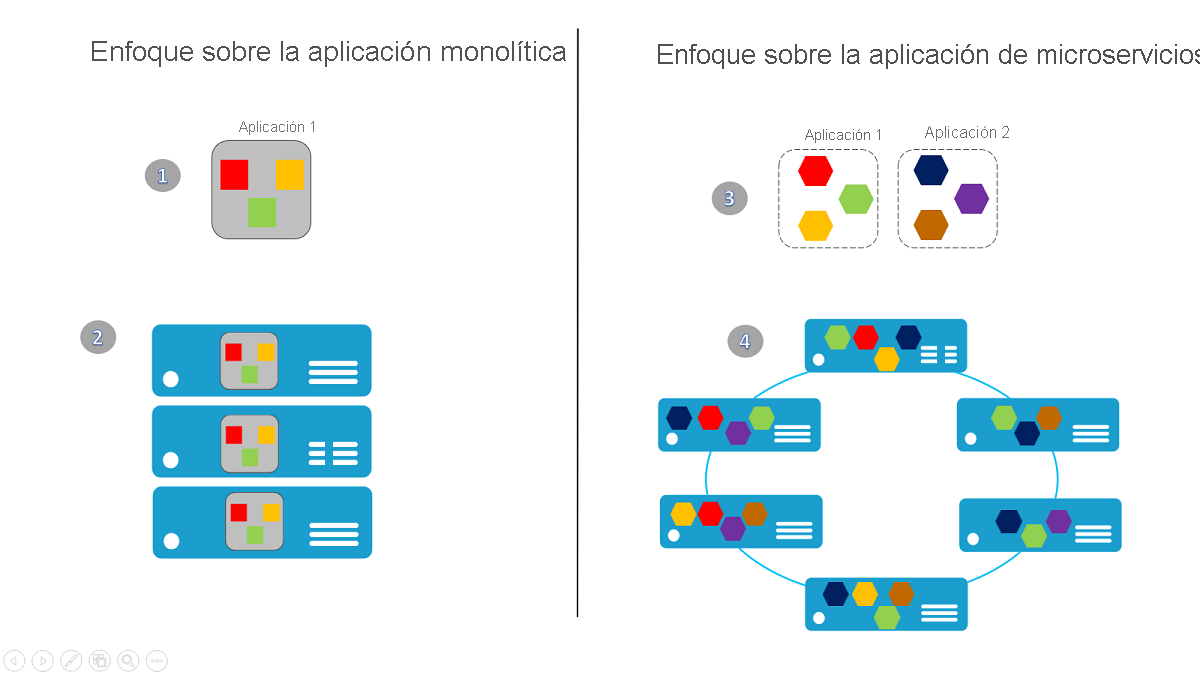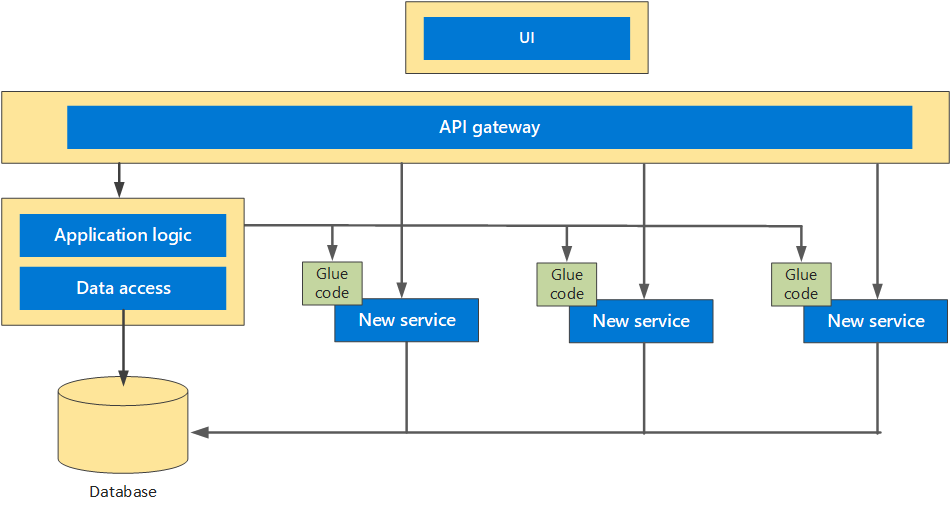In the software development industry, microservices and monolithic architectures are widely compared when defining the parameters of a new project. Although monolithic architecture has been the traditional method for application development, microservices architecture has gained popularity in recent years due to its flexibility and scalability. This approach to microservices can be found in large e-commerce platforms such as Amazon or Ebay, large-scale SaaS applications such as Netflix and social networking applications such as Facebook, but let's look at what each one entails, their differences and benefits.
What is a Monolithic Architecture?
Monolithic architecture is a development approach that integrates all elements of an application into a single system. The user interface, business logic and data access layer are all part of this. Since all the components are in one place, this method facilitates the development and initial deployment of an application. However, the monolithic architecture can present significant challenges in terms of scalability and maintenance as an application grows and becomes more complex. Updates and upgrades to a specific component may require deployment of the entire application, which increases the risk of bugs and downtime.
One of the points to keep in mind when developing a project with this approach is that it can hinder collaboration between work teams and limit the ability to adopt new technologies.
What is Microservices Architecture?
Microservices architecture focuses on dividing an application into multiple independent services that communicate with each other through APIs, so that each microservice is responsible for a specific functionality and can be developed, implemented and scaled independently. This allows development teams to work in parallel and adopt new technologies more easily.
The main advantages of a microservices architecture VS a monolithic architecture are:
- Scalability: Microservices can be scaled horizontally independently, allowing each organization to better manage its resources and adapt to market demands.
- Resilience: Unlike a monolithic architecture, if a microservice fails, it does not affect the entire application, which improves the stability and availability of the system at all times.
- Flexibility: Microservices can be developed and deployed using different programming languages and technologies, which facilitates the adoption of innovations.
Some of the challenges posed by this approach are the complexity of managing communication between services and the need to establish standards and development policies.

Example of monolithic architecture
In 2009, Netflix had growing pains. Its infrastructure could not keep pace with the rapidly growing demand for its video streaming services. In this situation, the company decided to migrate its IT infrastructure from its private data centers to a public cloud and replace the monolithic architecture with a microservices architecture. The only problem was that the term "microservices" didn't exist at the time, and the framework wasn't well known either.
Netflix became one of the first prominent companies to migrate from a monolith to a cloud-based microservices architecture. Serving as a reference for many other companies in the industry, in part due to this new infrastructure that internalized DevOps. Today, Netflix has more than a thousand microservices managing and supporting independent parts of the platform, while its engineers deploy code frequently, sometimes thousands of times a day.
Which one should I choose for my project: Microservices or Monolithic?
As we have seen, a monolithic application works by compiling as a single unified unit, while a microservices architecture is a series of small services that can be deployed independently. Which one to choose? The answer depends on several factors.
The choice between microservices architecture and monolithic architecture will depend on the specific needs of each project, sizing and organization. Monolithic architecture may be suitable for simpler, smaller-scale applications, while microservices architecture offers greater flexibility, scalability and connectivity for larger, more complex projects, favoring innovation.
In a traditional model, all processes are closely related, and as we have mentioned, if there is a higher peak demand, it is necessary to scale the entire architecture, making it much more complex to add or optimize new features that allow for a customized design and resource. This complexity limits experimentation and makes it difficult to implement new ideas. However, there are other approaches such as Strangler Fig that can overcome this step.
What is the Strangler Fig Pattern?
Is it possible to migrate incrementally? Systems, development tools and technology become obsolete over time and replacing a system can be too big a project for a development team. The Strangler Fig pattern is an approach that consists of gradually identifying and extracting specific functionalities from the monolithic application and turning them into independent microservices.
In this way, it will be possible to phase the replacement of the legacy system to the new one, replacing all the features of the previous system for its gradual decommissioning, while minimizing the risks of migration during application modernization. However, this pattern cannot be used when dealing with very small systems whose complexity is limited or when requests to the back-end cannot be intercepted.

Many architects choose to work on Azure, Microsoft's cloud platform, as they have a wide range of services and technologies to facilitate deployment, microservices management and use of modern orchestration tools, such as Azure DevoPs for managing the lifecycles of each service, Azure Kubernetes Service (AKS) for container orchestration and Azure API Management for API management.
Software development experts
At Intelequia we have a team specialized in developing web or mobile applications, using the most cutting-edge, agile and secure DevOps methodologies for our clients' projects. In addition, we are proud to have a Microsoft Advanced Specialization in Application Modernization, as well as a Solution Area in Digital & App Innovation. So if you have any questions or proposals, write us without obligation, we will be happy to help you.